Here’s a little secret from one cleaning ninja to another: Antique furniture is actually pretty much the easiest-to-maintain furniture you can own once you get rid of the layers of grime from years in storage. Here’s my method for how to clean antique furniture.
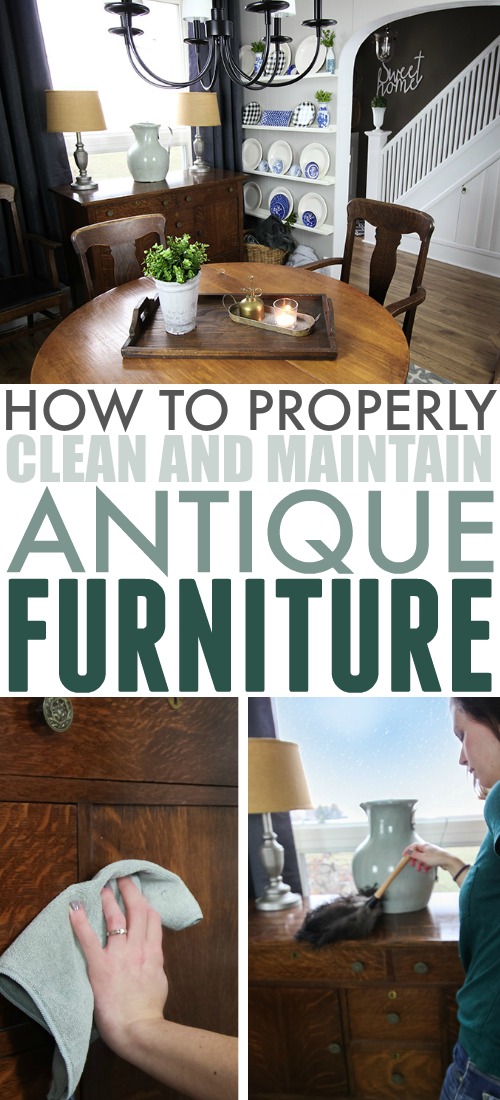
I feel like this is another basic truth of home maintenance that previous generations were well aware of, but that has kind of been forgotten over time. Antique furniture is by far the most practical, easiest-to-care for furniture. It’s usually made of higher quality wood so it resists scratches and keeps its finish, the perfectly-aged wood doesn’t show scratches quite as much as newer furniture does, if you do have a little incident with toy tow-trucks running into it, and it’s just generally not needy. AND it doesn’t take a whole lot of effort to clean or maintain either. Whereas with new furniture, you’ll be fussing to keep it looking perfect, touching up paint and wiping it down so you don’t see all the fingerprints and smudges that are for some reason so much more visible on newer pieces, antiques just need a few moments of your time every once in awhile and they don’t ask for much more than that. Here’s how I clean antique furniture.
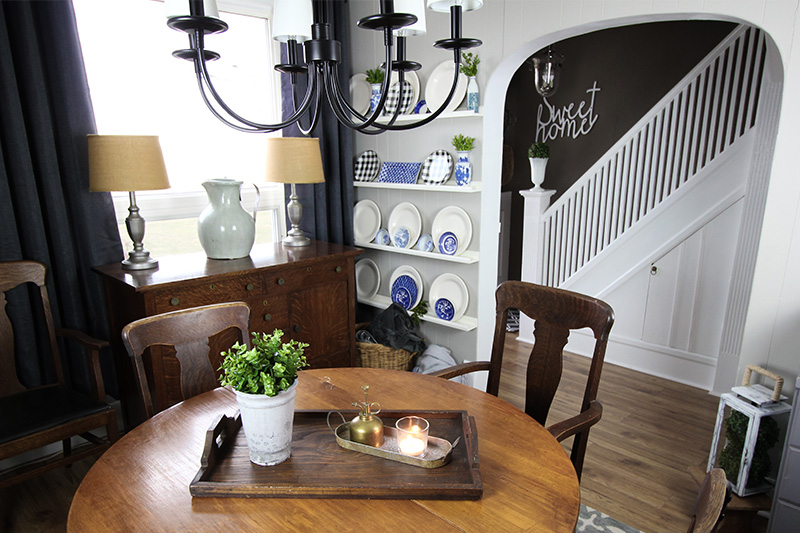
Simple is Best
If you’ve had your antique furniture passed down to you from a family member, or if you purchased it in good condition already, your cleaning routine will be very simple. When it comes to old furniture, the gentlest method is the best of course, and it’s also the easiest for you! Yay!
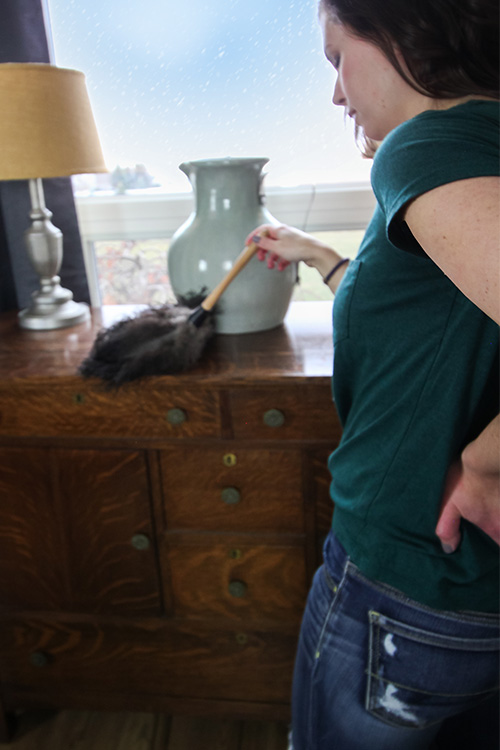
Once again, just as with a lot of cleaning jobs around the house, a feather duster is your best friend. If your furniture is in good shape, you really only need to spend a few seconds removing dust to make it look its best. A good quality ostrich feather duster will be extra gentle on any ornate details on your furniture, but will also grab onto dust and won’t let go. I love an ostrich feather duster in particular because of all the tiny little filaments coming off of each feather that can reach into every single nook and cranny without any effort at all, unlike trying to dust with a cloth.
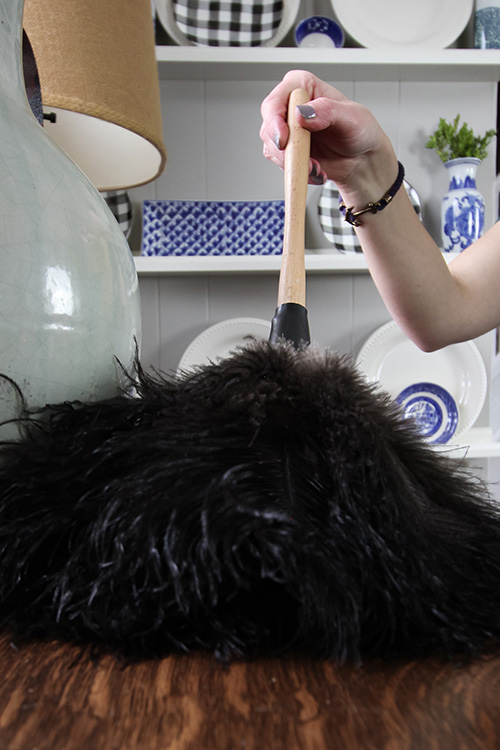 Protect and Polish
Protect and Polish
Every once in awhile, you’ll want to follow up your dusting routine with a little bit of wax-based furniture polish. This will condition the wood and keep it from drying out, polish it to a nice shine, and also provide a little layer of extra protection. If you have any spills or marks on your furniture that you need to clean, use the furniture polish for that as well instead of reaching for a damp cloth to wipe messes away.
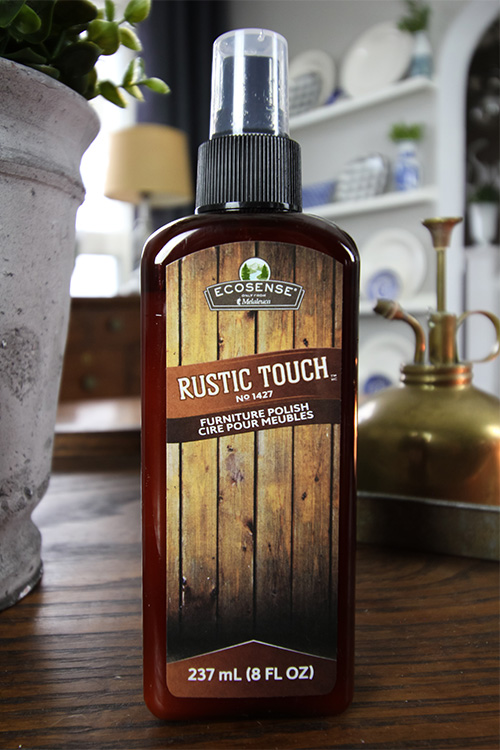
I have a furniture polish that I love that I’ve shared before. I’ve used it for years on my furniture, but also on leather shoes and even on my stainless steel appliances. This furniture polish comes from a company that I shop with monthly for all of my cleaning products, bath and body products, and things like that and that works for me, but that arrangement doesn’t necessarily work for everyone. I’ve been trying to find a comparable product for years to share with you that’s a little more readily-available and I finally found one! This Feed-n-Wax polish is exactly what I had in mind. 🙂
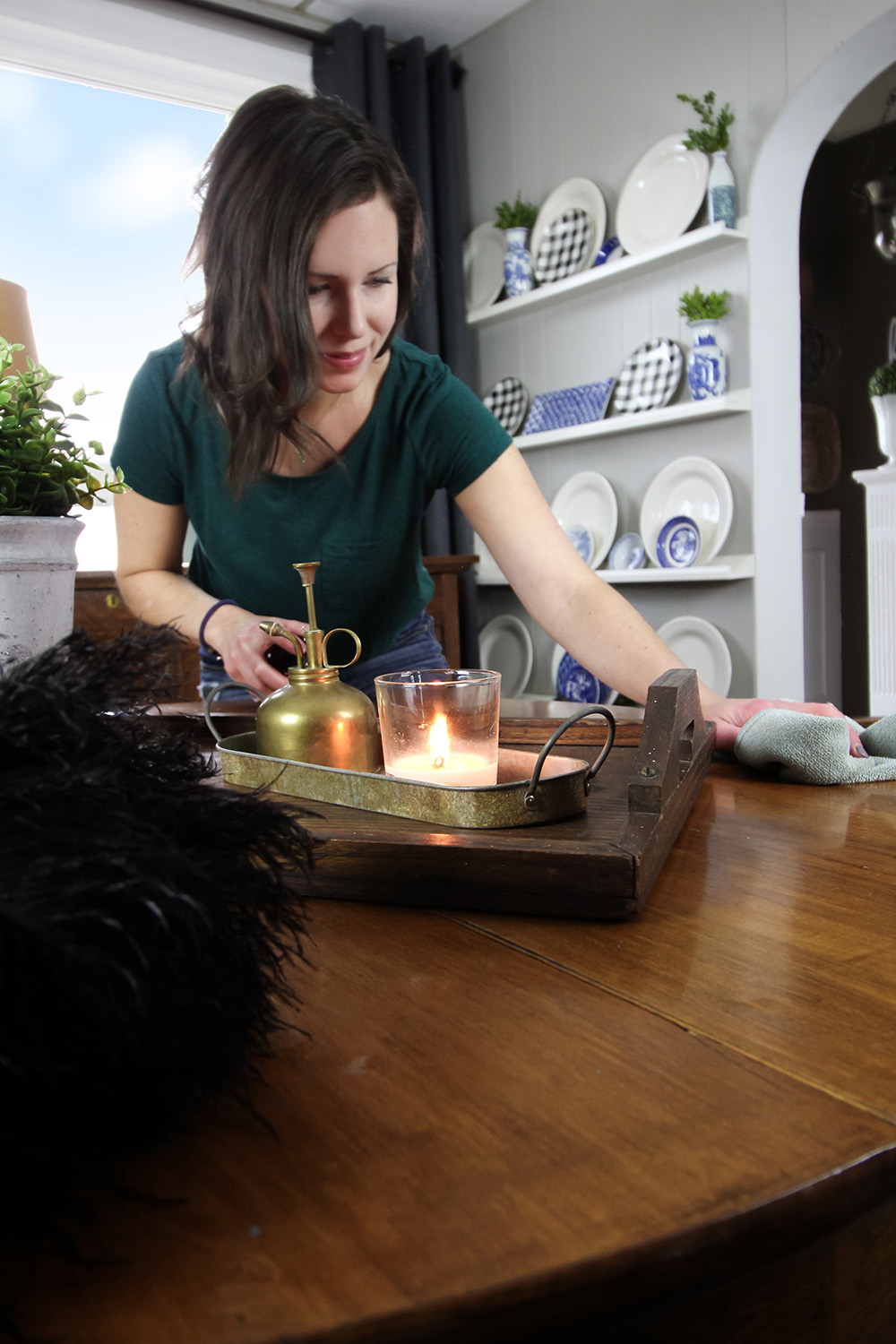
Removing Dirt and Grime Build-Up When You Clean Antique Furniture
Sometimes antique furniture comes to us in a state that’s not quite so clean and shiny. It happens. It’s old, it’s been around, it’s had some time to collect dust, and be spilled-on, and collect some more dust after that. If you have a layer of gunk to get off of your antique furniture before you can move on to your regularly-scheduled program, you’ll need to use a little bit of soap and water to lift that grime up. The key is to use as little water as possible while getting the job done. The concern with water is that if you have any marks or scratches where the wood is bare, you don’t want to get a lot of water on those spots because the moisture can cause the wood to expand and warp. Even very small scratches on old wood that you don’t even realize are there can cause this problem, so being careful with water is key!
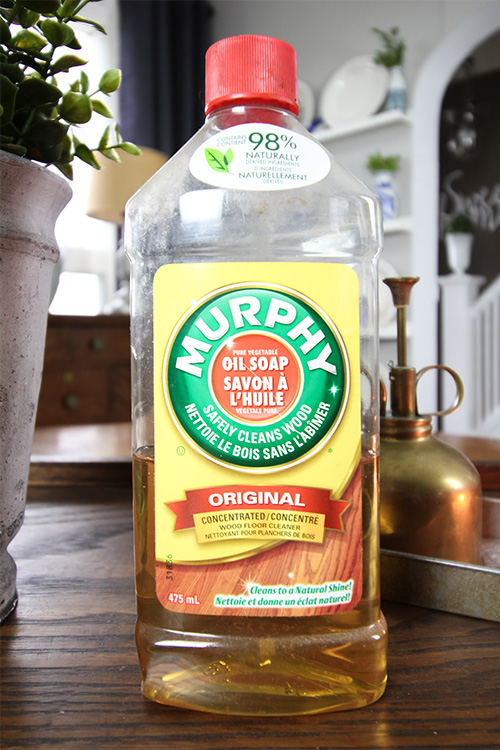
Mix a little bit of Murphy’s Oil Soap into some warm water according to the package directions, lightly dampen a soft cloth in the solution, then gently begin to wipe away the stuck-on dust and dirt. Aim to get about 95% clean this way, then switch over to using the furniture polish to get the rest of the dirt off. Side note: Isn’t it funny how everyone calls it Murphy’s Oil Soap, when it’s obviously Murphy Oil Soap when you look at the bottle?
If the wood on your piece seems really dry and you think it needs a really good deep-conditioning, try using a bit of flax seed oil (like I use on my wood counters) and let that soak in overnight before wiping away the excess with a dry cloth in the morning.
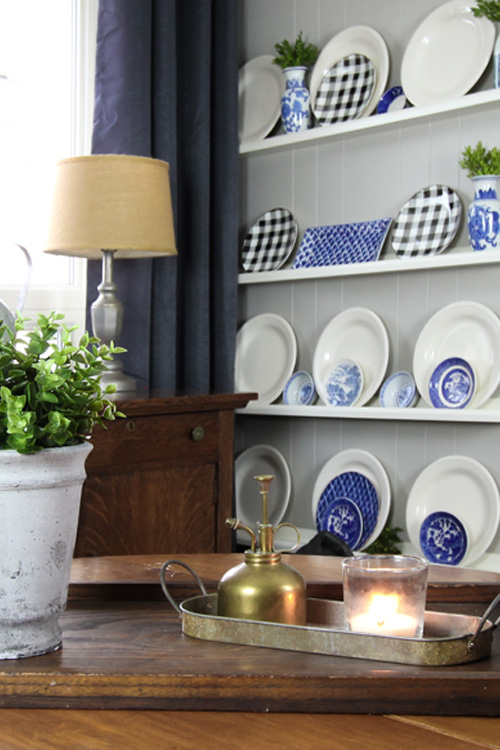
How to Clean Antique Furniture if it Smells
If you’re having issues with your furniture having an old musty smell, you can use some of the techniques that I mention in my post about cleaning thrift store furniture, just keep in mind that you want to use as little water as possible and be as gentle as possible if you want to keep your antique furniture in great condition for another 100 years to come. Sometimes with odors, simply giving the piece of furniture time to air out works best because of course, that’s about as gentle as you can get!
Do you have a special product or technique that you use to clean antique furniture without any effort at all?
MORE IDEAS LIKE THIS
- Cleaning Your Farmhouse
- Cleaning Tasks That You’re Doing too Often
- How to Deep Clean Your Home in Six Minutes a Day
- Keep Your Faucet Shiny With This Little Trick
- The Creek Line House Cleaning Archives
Courtenay Hartford is the author of creeklinehouse.com, a blog based on her adventures renovating a 120-year-old farmhouse in rural Ontario, Canada. On her blog, Courtenay shares interior design tips based on her own farmhouse and her work as founder and stylist of the interior photography firm Art & Spaces. She also writes about her farmhouse garden, plant-based recipes, family travel, and homekeeping best practices. Courtenay is the author of the book The Cleaning Ninja and has been featured in numerous magazines including Country Sampler Farmhouse Style, Better Homes and Gardens, Parents Magazine, Real Simple, and Our Homes.
